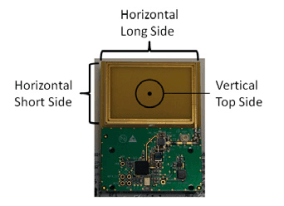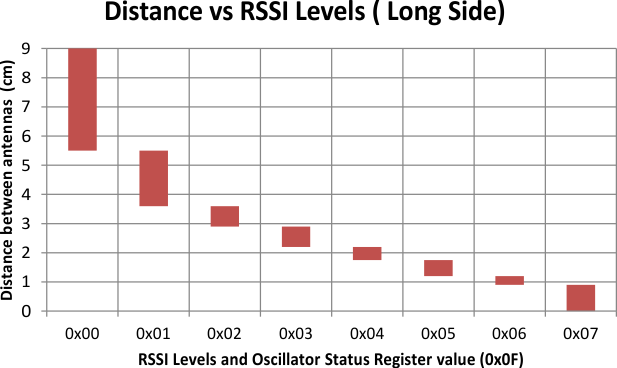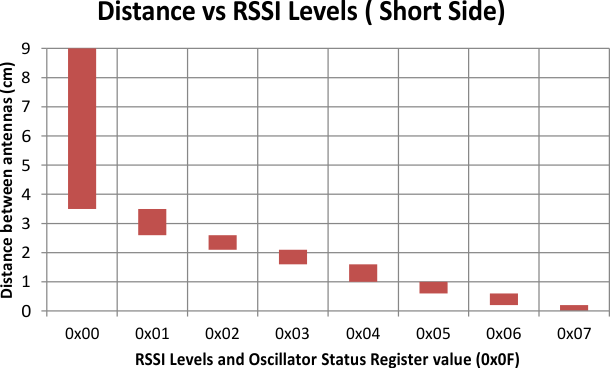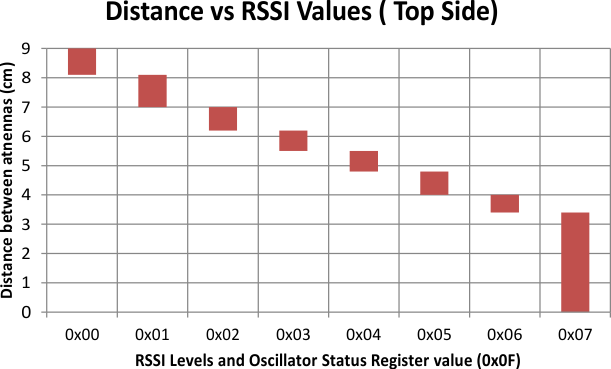SLOA192B April 2014 – March 2019 TRF7970A , TRF7970A
-
NFC active and passive peer-to-peer communication using the TRF7970A
- Trademarks
- 1 Introduction
- 2 Initial RF Collision
- 3 TRF7970A Register Settings
- 4 Peer-to-Peer at 106 kbps
- 5 Peer-to-Peer at 212 kbps and 424 kbps
- 6 Hardware Description
- 7 Passive and Active Peer-to-Peer Firmware Example
- 8 Quick Start Guide
- 9 Operational Overview
- 10 Peer-to-Peer Interoperability Results
- 11 Conclusion
- 12 References
- Revision History
2 Initial RF Collision
Various implementations of peer-to-peer exist today; these implementations may poll through commands at different time intervals (500 ms, 300 ms, and so forth). To ensure that two NFC devices do not send commands at the same time, an initial RF collision detection is required. The transceiver must check the external Received Signal Strength Indicator (RSSI) value, which measures the strength of the demodulated subcarrier signal, before enabling its own RF field. If the RSSI value is greater than 0x00, the transceiver does not enable its RF field.
The relation between the 3-bit code and the external RF field strength (A/m) sensed by the antenna must be determined by calculation or by experiments for each antenna design. The antenna Q-factor, coupling factor between the two antennas, and connection to the RF input influence the result. Figure 3 through Figure 5 provide the correlation of the free space distance between two unmodified TRF7970ATB modules and the 3-bit external RSSI value in three directions. For more details on each orientation, see Figure 2. One TRF7970A has its RF field at full power (+23 dBm), and the second TRF7970A is used to take RSSI measurements across different distances.
 Figure 2. RSSI Level Measurement Orientations
Figure 2. RSSI Level Measurement Orientations  Figure 3. Long Side RSSI Level Measurement
Figure 3. Long Side RSSI Level Measurement  Figure 4. Short Side RSSI Level Measurement
Figure 4. Short Side RSSI Level Measurement  Figure 5. Top-Side RSSI Level Measurement
Figure 5. Top-Side RSSI Level Measurement The initial RF collision can be accomplished by performing the following steps:
- Write 0x02 and 0x03 (3-VDC and 5-VDC operation) to the Chip Status Control register (0x00) disabling the transmitter and enabling the receiver.
- Send a Test External RF Direct command (0x19).
- Delay 50 µs to allow the transceiver to measure the field strength, and latch the value into the RSSI register.
- Read the RSSI Levels and Oscillator Status register (0x0F).
- If the active channel RSSI value (bits 2-0) is greater than 0, remain in target mode for a predetermined n ms.
- If the active channel RSSI value (bits 2-0) is equal to 0, go into initiator or target mode for active or passive communication.